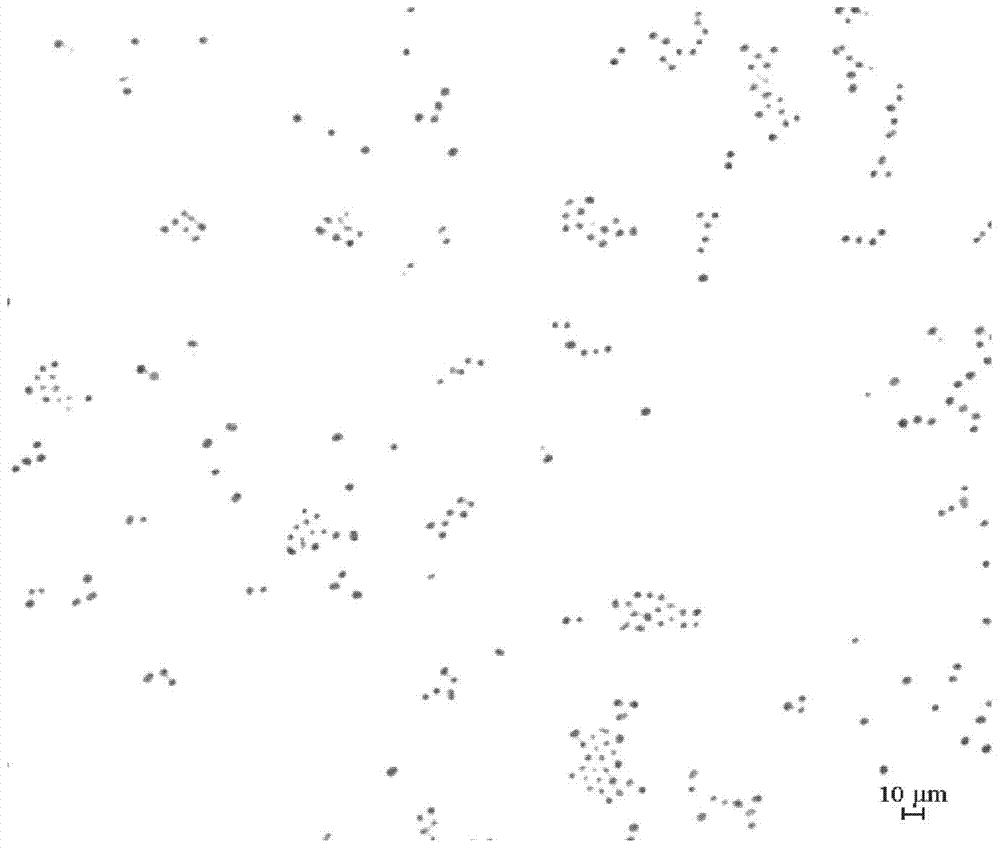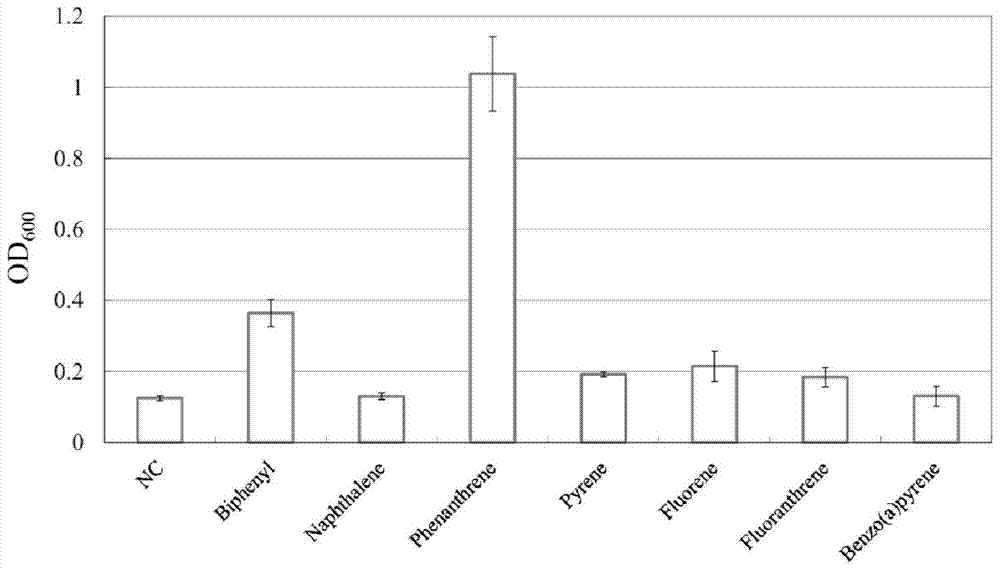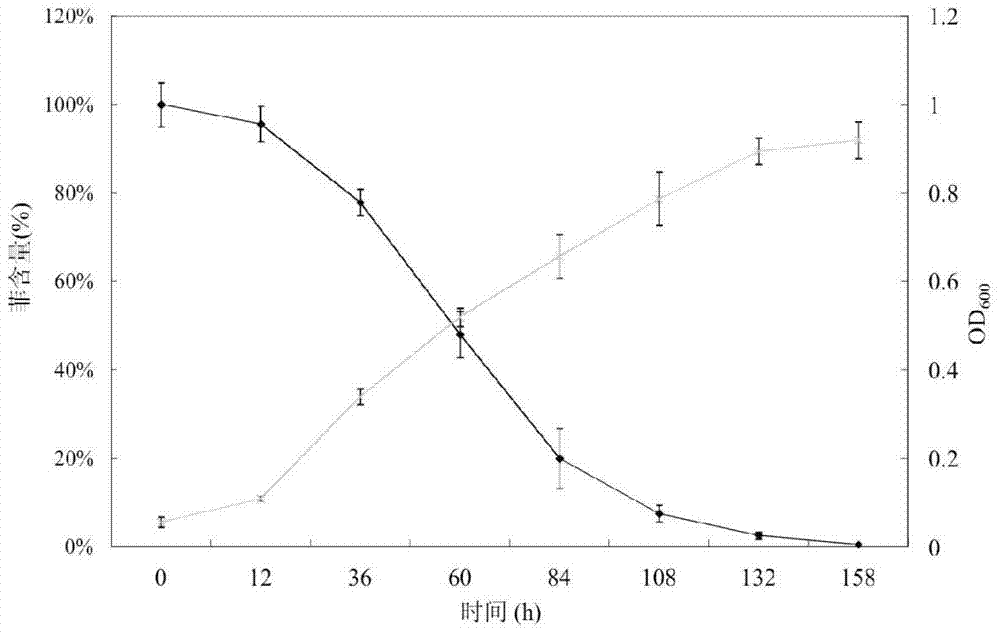Sphingobacter strains for degrading polycyclic aromatic hydrocarbon organic pollutants and their applications
A technology of organic pollutants and sphingosine bacteria, which is applied in the field of environmental organic pollutants remediation and treatment, can solve problems such as threatening human health, accumulation of PAHs, damage to soil ecological environment, etc., and achieve the effect of high efficiency and rapid degradation ability.
- Summary
- Abstract
- Description
- Claims
- Application Information
AI Technical Summary
Problems solved by technology
Method used
Image
Examples
Embodiment 1
[0020] Example 1 Isolation and identification of W144 bacterial strain
[0021] The long-term oil-contaminated soil from Qianjiang Jianghan Oilfield in Hubei was used as the screening soil. The specific screening scheme is as follows:
[0022] 1) Take 10g of soil, add it to the inorganic salt medium MSM without carbon source, and then add Phenanthrene to make the final concentration 100mg / L; culture with shaking at 28°C for 5 days, and then inoculate with 5% into the corresponding fresh medium; transfer 5 times in succession;
[0023] 2) Take 0.1ml of the enriched culture solution, spread it on the MSM solid plate containing phenanthrene, and after static culture at 28°C for 5 days, transfer the colonies grown on the plate to the plate containing phenanthrene, and continue to grow; then Select fast-growing colonies for plate streak purification;
[0024] 3) Pick stable growing colonies, inoculate them into MSM medium containing 100 mg / L phenanthrene, and cultivate them with ...
Embodiment 2
[0028] Example 2 Degradation characteristics of polycyclic aromatic hydrocarbons by strain W144
[0029] The inventors studied the ability of the W144 strain to degrade common polycyclic aromatic hydrocarbons. Based on the MSM medium without carbon source, add different polycyclic aromatic hydrocarbons as the sole carbon source, so that the final concentration is 100 mg / L; then inoculate W144 culture in logarithmic growth phase with 1% inoculum , placed at 28°C for 5 days with shaking culture, measured the OD of the culture 600 absorbance value. The medium without any carbon source was used as negative control. Since no carbon source other than polycyclic aromatic hydrocarbons was added to the medium, the growth rate and biomass of the strain reflected the ability of the strain to utilize and degrade polycyclic aromatic hydrocarbons.
[0030] like figure 2 As shown, W144 has the maximum utilization ability for phenanthrene, and has strong degradation ability for biphenyl,...
Embodiment 3
[0031] Example 3 Degradation characteristics of phenanthrene by W144 strain
[0032] In order to further analyze the degradation characteristics of the W144 strain provided by the present invention to polycyclic aromatic hydrocarbons, the inventor tested the growth rate and degradation rate of the W144 strain with phenanthrene as the sole carbon source. The W144 strain in the logarithmic growth phase was inoculated with 1% inoculum into the MSM medium with 500 mg / L phenanthrene as the sole carbon source, and cultured with shaking at 28°C. Meanwhile, measure the OD of the culture every 12 hours 600 value and concentration of residual phenanthrene.
[0033] like image 3It was shown that W144 bacteria had the ability to degrade phenanthrene from the beginning of inoculation, and the degradation ability and strain growth increased rapidly after 12 hours, and, as the residual phenanthrene concentration in the culture decreased, the growth of the strain gradually entered a platea...
PUM
 Login to View More
Login to View More Abstract
Description
Claims
Application Information
 Login to View More
Login to View More - R&D
- Intellectual Property
- Life Sciences
- Materials
- Tech Scout
- Unparalleled Data Quality
- Higher Quality Content
- 60% Fewer Hallucinations
Browse by: Latest US Patents, China's latest patents, Technical Efficacy Thesaurus, Application Domain, Technology Topic, Popular Technical Reports.
© 2025 PatSnap. All rights reserved.Legal|Privacy policy|Modern Slavery Act Transparency Statement|Sitemap|About US| Contact US: help@patsnap.com



